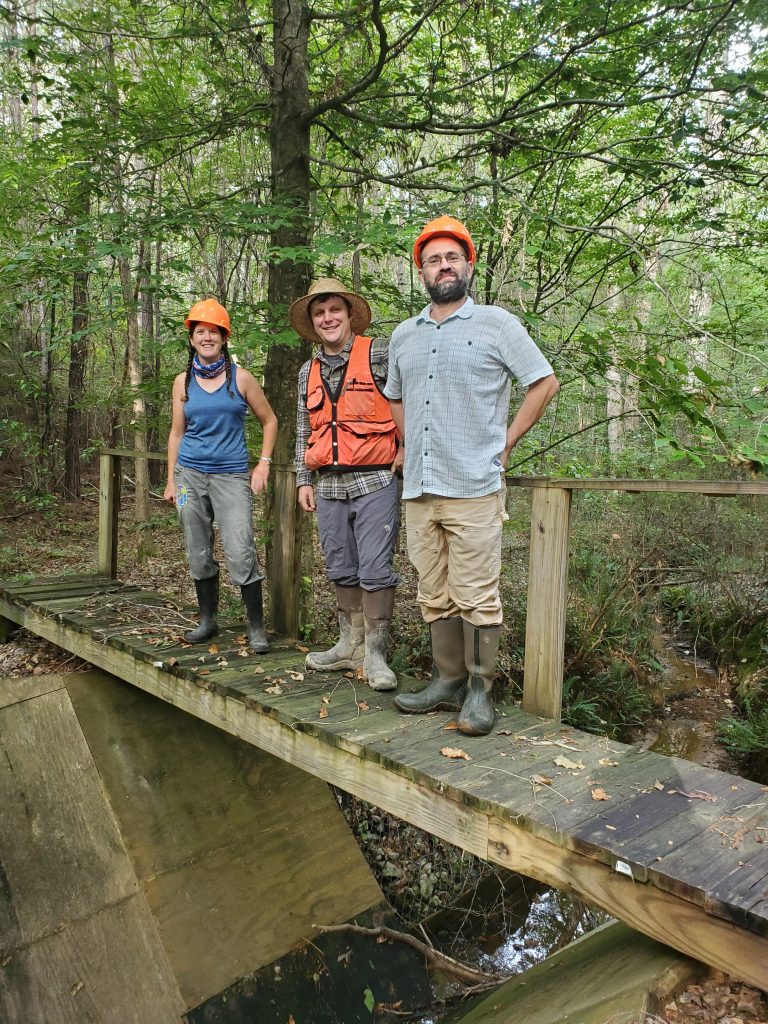Drs. Atkinson, Benstead and Jones have been awarded an EPSCoR RII Track 2 FEC proposal titled “Aquatic Intermittency effects on Microbiomes in Streams (AIMS),” led by colleagues at the University of Kansas and with collaborators at University of Mississippi, University of Southern Mississippi, University of Oklahoma, Kansas State University, and Idaho State University. This 4-year project with a start date of September 2020 will allow the team to address knowledge gaps on intermittently flowing streams, which control the quantity and quality of water delivered downstream to perennial streams and rivers. While much of the understanding of the linkages among microbial communities (microbiomes), stream health, and water quality rely on studies of perennially flowing streams, more than half of global stream-miles do not flow continuously. These intermittent streams are found across the entire U.S.–from western deserts to eastern forests.
In Alabama alone, over 40% of our streams and rivers go dry on an annual basis. However, we know very little about what drives this drying, and importantly, how it impacts downstream water quality. In part, this gap in knowledge is due to the lack of i) physical infrastructure designed to measure intermittency, and ii) scientific training that straddles aquatic and terrestrial ecology. The AIMS project will address the first obstacle by creating a network of instrumented sites designed to generate “Big Data” to quantify flow intermittency, stream microbiomes, and water quality. AIMS will confront the second obstacle by using its network to provide training in collaborative science and interdisciplinary methods to study intermittent streams, and by providing workforce training in environmental “Big Data” tools through a new ‘On Ramps to Data Science’ program, which will focus on data generated by microbiome sequencing, environmental sensors, and Geographic Information Systems (GIS). This infrastructure and training will support a team of 18 investigators, including nine early-career scientists spanning five EPSCoR jurisdictions (AL, ID, KS, MS, OK). The work in the southeast U.S. region will engage a diverse group of students, including undergraduates at Alabama A&M, a HBCU. The project will include regional analysis within the southeast region and will allow comparisons to the data being collected across the broad geographic scale that the AIMS project encompasses, while also engaging a diversity of researchers across career stages. The overarching objective is to create research infrastructure and training capable of integrating big data sources needed to address water quality at the critical nexus between intermittent and perennial streams.
